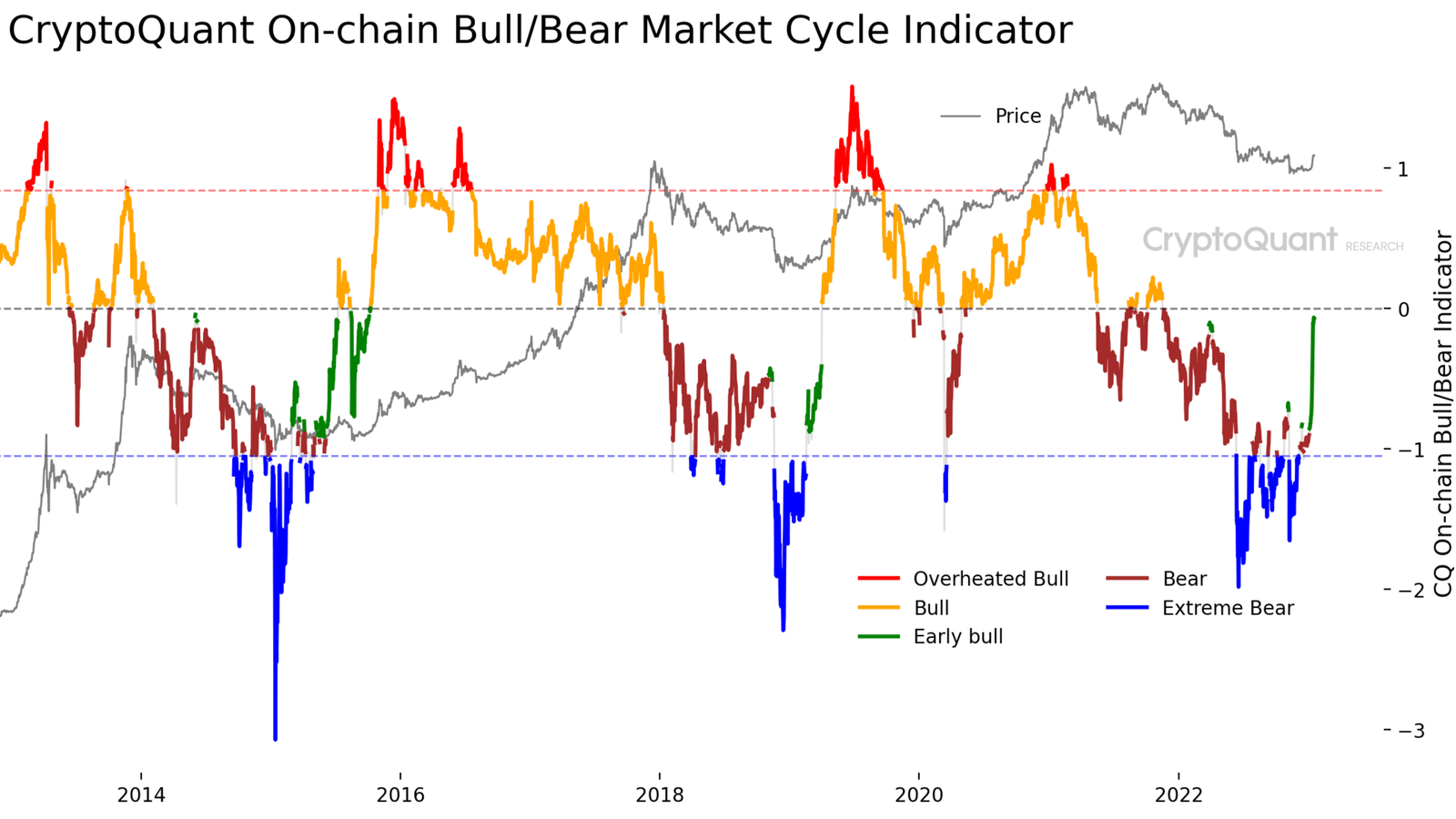Introduction
The world of cryptocurrency has always been marked by volatility, with Bitcoin at the forefront of this financial revolution. Since its inception, Bitcoin has seen dramatic price fluctuations, creating cycles of bullish and bearish trends that traders and investors watch closely. Understanding these cycles is crucial for predicting future price movements and making informed investment decisions.
As Bitcoin’s price holds steady around the $60,000 mark, many analysts are beginning to speculate on what comes next. Could we be on the verge of a Quick Bullish Turn? In this post, we will delve into the How Bitcoin Bull-Bear Cycle provides insights into a potential quick bullish turnaround, with a particular focus on the current market conditions and the factors that may influence Bitcoin’s next move.

Understanding the Bitcoin Bull-Bear Cycle
The Basics of Bull and Bear Markets
Before diving into the specifics of Bitcoin, it’s essential to understand the broader concept of bull and bear markets. A bull market is characterized by rising prices, optimism, and investor confidence. During this phase, the demand for assets increases, driving prices higher. On the other hand, a bear market is marked by declining prices, pessimism, and fear. In this phase, the demand for assets decreases, causing prices to fall.
These cycles are not unique to Bitcoin; they occur across all financial markets. However, in the cryptocurrency space, these cycles tend to be more pronounced due to the market’s relatively small size, high volatility, and the emotional behavior of investors.
Historical Bitcoin Cycles
Bitcoin has experienced several Bull-Bear Cycles since its inception in 2009. One of the most notable cycles occurred in 2017 when Bitcoin’s price surged to nearly $20,000 before crashing down to around $3,000 by the end of 2018. Another significant cycle took place in 2020-2021 when Bitcoin’s price skyrocketed from around $10,000 to an all-time high of $64,000, only to experience a sharp correction later.
These cycles are driven by a combination of factors, including market sentiment, macroeconomic trends, regulatory news, and technological developments within the cryptocurrency space. Each cycle provides valuable lessons and insights into how Bitcoin behaves under different market conditions.
Factors Influencing the Current Cycle
Market Sentiment and Investor Behavior
Market sentiment plays a crucial role in shaping the Bitcoin Bull-Bear Cycle. In a bull market, optimism and excitement drive prices higher as investors rush to buy Bitcoin, fearing they might miss out on further gains. Conversely, in a bear market, fear and uncertainty dominate, leading to panic selling and price declines.
Currently, Bitcoin is holding around the $60,000 mark, a significant psychological level. The fact that Bitcoin has managed to maintain this level despite recent market turbulence suggests a strong underlying bullish sentiment. Investors are showing resilience and confidence in Bitcoin’s long-term potential, which could indicate a Quick Bullish Turn over in the near future.
Macro-Economic Factors
Bitcoin is not immune to macroeconomic trends. Global economic conditions, inflation rates, and monetary policies can all influence Quick Bullish Turn. For example, during periods of economic uncertainty or high inflation, Bitcoin is often seen as a hedge against traditional financial systems, driving demand and prices higher.
As we approach the end of 2024, several macroeconomic factors are at play. Inflation rates remain high in many countries, and central banks are adopting varied approaches to interest rates and monetary policies. These conditions create an environment where Quick Bullish Turn could attract more investors seeking a safe haven, potentially triggering the next bull market phase.
Regulatory Developments
Regulation is another critical factor influencing Bitcoin’s Bull-Bear Cycle. Over the years, regulatory news has had a significant impact on Bitcoin’s price. Positive regulatory developments, such as the approval of Bitcoin ETFs or favorable tax policies, can boost investor confidence and drive prices higher. Conversely, negative news, such as bans or restrictions, can lead to sharp price declines.
In 2024, the regulatory landscape for Bitcoin is still evolving. While some countries have embraced Bitcoin and other cryptocurrencies, others remain cautious or hostile. Any new regulatory announcements could serve as a catalyst for the next significant price movement.
Analyzing the $60,000 Level: A Crucial Support?
Historical Significance of $60,000
The $60,000 price level has become a critical point of focus for Bitcoin investors and analysts alike. Historically, this level has acted as both a significant resistance and support level. For instance, in the first half of 2021, Bitcoin struggled to break through the $60,000 barrier, and when it finally did, the price soared to new heights. Similarly, after the subsequent correction, the $60,000 level has served as a critical support level, with Bitcoin bouncing back from this point multiple times.
The fact that Bitcoin is currently holding above $60,000 suggests that this level is providing strong support, and the market may be gearing up for a Quick Bullish Turn over. If Bitcoin can maintain this support, it could serve as a launchpad for the next leg of the bull market.
Technical Indicators
Technical analysis provides further insights into how the Bitcoin Bull-Bear Cycle might unfold. Several key indicators are currently pointing towards a potential Quick Bullish Turn. For example, the Relative Strength Index (RSI), which measures the speed and change of price movements, is currently in a neutral zone, indicating that Bitcoin is not overbought or oversold. This suggests that there is room for upward movement without significant resistance.
Additionally, the Moving Average Convergence Divergence (MACD) indicator, which identifies changes in the strength, direction, momentum, and duration of a trend, is showing signs of a bullish crossover. This technical signal is often interpreted as an indication that a price increase could be imminent.
The Role of Institutional Investors
Increasing Institutional Adoption
One of the most significant developments in recent years has been the growing interest from institutional investors in Bitcoin. Unlike retail investors, who may be more prone to emotional trading, institutional investors typically take a longer-term view and are more likely to hold their positions through market fluctuations.
The entrance of institutional investors into the Bitcoin market has been a key driver of the recent bull market. Companies like Tesla, MicroStrategy, and Square have all made significant investments in Bitcoin, signaling a growing acceptance of cryptocurrency as a legitimate asset class. This trend is likely to continue, and as more institutions enter the market, the demand for Bitcoin could increase, leading to a Quick Bullish Turn.
The Impact of Bitcoin ETFs
Another critical factor contributing to the current market dynamics is the approval and launch of Bitcoin ETFs (Exchange-Traded Funds) in various countries. Bitcoin ETFs allow investors to gain exposure to Bitcoin without having to buy and store the cryptocurrency directly. This makes it easier for institutional investors, as well as retail investors, to invest in Bitcoin, potentially driving up demand and prices.
As more Bitcoin ETFs are approved and launched, the influx of new investors could provide the fuel needed for the next leg of the bull market. This development underscores the importance of the How Bitcoin Bull-Bear Cycle in predicting future price movements and the potential for a Quick Bullish Turn.
Potential Barriers to the Bullish Turn
Market Volatility and External Shocks
While the indicators for a Quick Bullish Turn are strong, it’s essential to consider potential barriers that could prevent or delay this outcome. One of the most significant risks is the inherent volatility of the cryptocurrency market. Bitcoin has a history of sharp price swings, and external shocks, such as geopolitical events, economic crises, or technological failures, could lead to sudden market downturns.
Investors should remain cautious and be prepared for the possibility of unexpected market movements. Diversifying investments and setting stop-loss orders are some of the strategies that can help mitigate risks in a volatile market.
Regulatory Uncertainty
As mentioned earlier, regulation is a double-edged sword for Bitcoin. While positive regulatory developments can boost prices, negative news can have the opposite effect. The regulatory environment for Bitcoin is still uncertain in many parts of the world, and any sudden changes could have a significant impact on the market.
For example, if a major economy were to introduce strict regulations or outright bans on Bitcoin trading or mining, it could lead to a sharp decline in prices. Investors should keep a close eye on regulatory developments and be prepared to adjust their strategies accordingly.
Technological Risks
Bitcoin’s technology is robust, but it is not without its risks. Issues such as network congestion, security breaches, or software bugs could lead to disruptions in the Bitcoin network, potentially impacting prices. Additionally, competition from other cryptocurrencies, such as Ethereum or emerging blockchain technologies, could also pose a threat to Bitcoin’s dominance.
Investors should stay informed about the latest technological developments in the cryptocurrency space and consider the potential impact of these factors on their investments.
Conclusion: Are We Heading Towards a Quick Bullish Turn?
In conclusion, the How Bitcoin Bull-Bear Cycle provides valuable insights into the current state of the market and the potential for a Quick Bullish Turn as Bitcoin holds steady around the $60,000 level. Several factors, including strong market sentiment, increasing institutional adoption, and favorable technical indicators, suggest that Bitcoin may be poised for another leg up in the near future.
However, investors should also be aware of the potential risks and barriers that could delay or prevent this outcome. Market volatility, regulatory uncertainty, and technological risks are all factors that could impact Bitcoin’s price in the coming months.
As we continue to monitor the market, it’s essential to remain vigilant and adaptable. Whether you’re a seasoned investor or a newcomer to the world of cryptocurrency, understanding the How Bitcoin Bull-Bear Cycle can help you make more informed decisions and navigate the complexities of this dynamic market.






